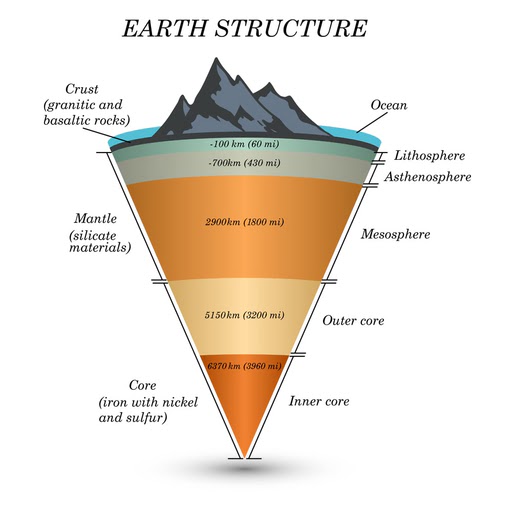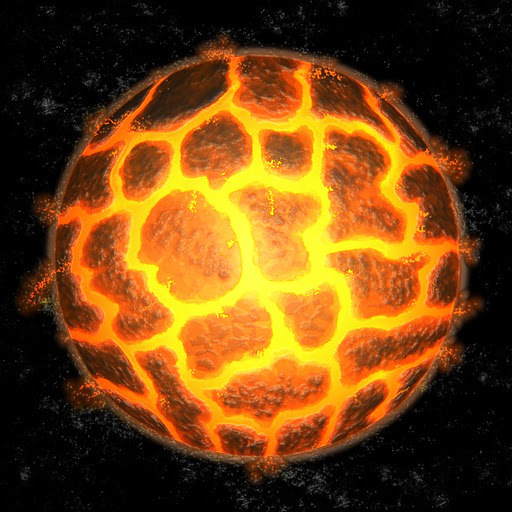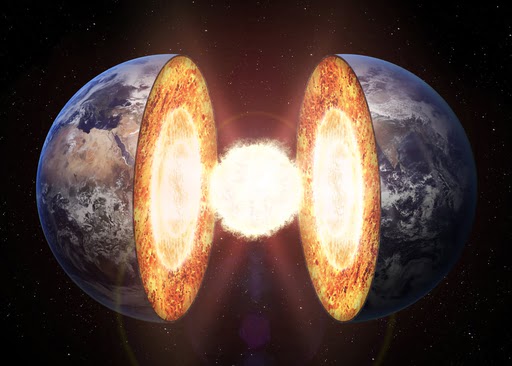The high temperature of Earth’s core is a result of the stored primordial heat and radioactive decay.
Imagine it’s the middle of winter and you are comfortably sleeping in your bed. The next day is planned and you’re looking forward to taking your dog for a walk in the park. But when you wake up and look out the window, you see that the snow has covered everything.
Suddenly, you remember something you read about the Earth’s core being extremely hot. If that’s true, then where is all the heat going? And why is there snow if there’s so much heat underground?
If you’ve ever had these thoughts, it seems like you might have missed some important information about the Earth’s core!
Yes, the Earth’s core is indeed hot, but it has been that way since the Earth was formed. In fact, the hot core is what allows us to exist on this planet! Sound strange? Well, it’s true. The Earth’s hot core is essential for our survival.
Before we delve into the depths of the Earth, let’s try to understand more about its layers.
The Layers of the Earth
While we humans have advanced enough to capture images of black holes, understanding our own planet has always been a challenge. However, studying rocks from volcanic eruptions and analyzing seismic waves (waves generated inside the Earth by earthquakes, volcanic eruptions, or other disturbances) has helped us gain a better understanding of the Earth’s internal structure.
The Earth is not a homogeneous solid, but rather consists of multiple layers. It was formed around 4.6 billion years ago during the birth of the solar system. Initially, it was a ball of gases, but as the gases interacted and materials of different densities separated, the Earth transformed into a large rocky planet with layers resembling an onion.
 Layered structure of Earth (Photo Credit: cigdem/Shutterstock)
Layered structure of Earth (Photo Credit: cigdem/Shutterstock)
The outermost layer of the Earth is called the crust. This is where we live, build homes, and grow plants. The crust is relatively thin compared to the other layers. The oceanic crust is about 8 km deep and consists mostly of basalt, while the continental crust is around 32 km thick and mainly composed of granite.
Just below the crust is the mantle, which is approximately 2,900 km thick. The upper mantle is rigid and brittle, but the lower mantle behaves like a partially molten rock. The upper part of the mantle, along with the crust, is known as the Lithosphere, while the partially molten layer is called the Asthenosphere.

Layers of Earth in Cross Section (Photo Credit : Ellen Bronstayn/Shutterstock)
Beneath the mantle lies the core, which is divided into two parts – the outer core and the inner core. The outer core is primarily made up of iron and nickel and is completely in a liquid state. It has an extremely high temperature, ranging from 4,000 to 5,000 degrees Fahrenheit. It is approximately 2,300 km thick.
Going through the outer core, we reach the hottest part of the planet, which is the inner core. The inner core has an unbelievably high temperature ranging from 9,000 to 13,000 degrees Fahrenheit. The most surprising part is that even with such high temperatures, the inner core is completely solid and is around 1,200 km thick.
Why is the Earth’s Core so Hot?
For us humans living happily on the crust, it’s difficult to imagine that the Earth’s core can have a temperature that is even higher than the surface temperature of the sun. The real question naturally arises… how is our 4.6 billion-year-old Earth producing so much heat? There are two main reasons behind the Earth’s blazing core.
Primordial Heat
Firstly, it is due to the process by which our planet was formed – accretion. When the solar system came into existence, our planet also began its journey around the sun. The gravitational pull was so strong that numerous meteorites and other objects came together to form a large planet. Whenever such accretionary processes occur, a tremendous amount of heat is produced.

Earth’s Formation through Accretion (Photo Credit : TheVagabond V.Schaal/Shutterstock)
After this process of planetary formation was completed, materials began to separate into layers based on their density. The densest materials settled in the core. Even this settling process generated a lot of heat.
This primordial heat of the Earth still exists in the core because our large Earth was unable to dissipate it quickly when it was formed, and now this heat has settled. It can only dissipate through the crust, but since the plates act as a blanket and the mantle is not a particularly good conductor, the heat is here to stay for a long time.
Radioactive Decay
The second reason behind the heated core is the decay of radioactive elements, such as Uranium. Radioactive decay is responsible for the creation of daughter isotopes, which is an exothermic process.
There is one small difference between the heat obtained from radioactive decay and primordial heat. It is believed that the primordial heat is mostly concentrated in the core, while the heat released due to radioactive decay is distributed throughout the other layers of the planet.
However, is this hot core really benefiting us in any way? Let’s find out more!
Importance of Earth’s Core
While the Earth’s core is as hot as the sun, it is crucial for sustaining life on our planet. The outer core is liquid and therefore keeps flowing. Convection currents are generated due to this motion, which is the cause of Earth’s magnetic field. This magnetic field, in turn, protects us from solar flares and maintains Earth’s habitable atmosphere. The inner core helps to stabilize this magnetic field.
 The motion of the mantle and the shifting of continents are caused by the convection currents in the outer core and the heat it produces. This movement is essential for the creation of new landmasses. The Earth’s core plays a crucial role in supporting the survival and growth of all living beings, including plants. If the core were to become cold, solid, or liquid, life would not be able to thrive. The balance provided by the Earth’s core is of utmost importance to our world.
The motion of the mantle and the shifting of continents are caused by the convection currents in the outer core and the heat it produces. This movement is essential for the creation of new landmasses. The Earth’s core plays a crucial role in supporting the survival and growth of all living beings, including plants. If the core were to become cold, solid, or liquid, life would not be able to thrive. The balance provided by the Earth’s core is of utmost importance to our world.
